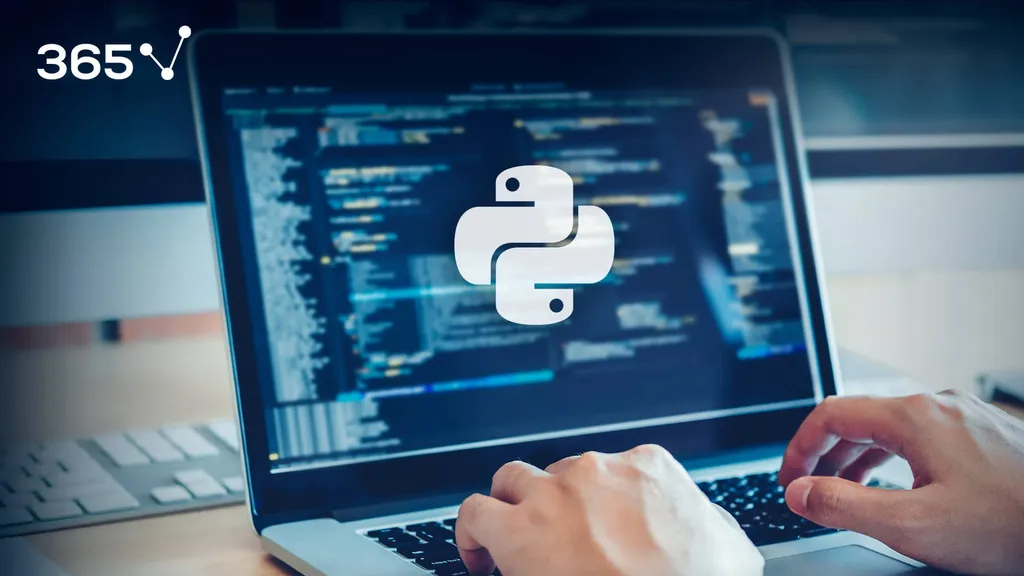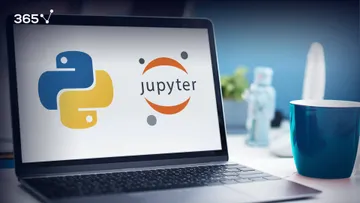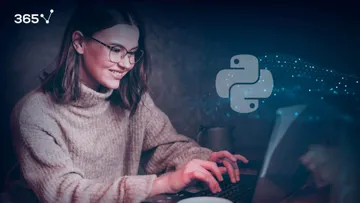
If you have just started programming or are looking for a career change, you might recognize the name Python already. Perhaps someone recommended it to you as the best programming language to learn? Regardless, you’ve most probably heard of it.
Python’s popularity has surged in recent years. There are many reasons why even those who once shied away from it, enthusiastically defending other programming languages instead, are now slowly moving towards the super intuitive and easy-to-learn Python instead.
In this article, we’ll take a closer look at one of the fastest-growing and most in-demand programming languages. More specifically, we’ll cover why you should definitely learn Python in 2022, and how long it takes to master it.
You can check out our dedicated video on the subject embedded below or scroll down to keep reading.
Why Should You Start Learning Python?
Just think about it. In a yearly survey for the most in-demand programming languages, conducted by Stack Overflow in 2015, Python was near the bottom of the list – landing in 6th place. However, jumping forward to the most recent survey in 2021, Python gains ground over SQL, coming in at 3rd place, just behind Javascript and HTML – a step up from 2020. This is certainly powerful evidence that people are doing more and more work using Python.
What Lies Behind Python’s High Demand and Increasing Popularity?
Why has it gained so much more traction in recent years? And, more importantly, why is learning Python one of the best decisions you can make in 2022? We’ll give you the top 5 reasons:
1. Python Is Simple and Syntax-friendly
Back in the late 80s, Python creator Guido von Rossum started this ambitious endeavor because he wanted to make a programming language that was as close to the human language as possible, and accessible and easy to use by beginners and experts alike. In other words, Python is a lot like the English language – a lingua franca that anyone can understand and gain proficiency in. Because of its simple, yet powerful syntax and intuitive nature, von Rossum’s project went from ambition to one of the most popular programming languages of the 21st century.
2. The Extremely Rich Python Libraries at Your Disposal
One of the reasons why Python’s popularity is growing so rapidly and is adopted by so many organizations is that it’s an open-source language that allows you to take advantage of extremely rich libraries. You’ll no doubt hear people referring to it as the “batteries included” language for this very reason. What is more, Python libraries do all the heavy lifting for you. Whatever the topic, in most cases, there’s already an existing Python library for it – all you need to know is how to use it. At the same time, if you would like to, Python gives you the flexibility to develop some custom functionalities on your own as it is a general-purpose language.
3. Python Has Extensive Online Documentation
Python was first released in 1991. Since then, the language has been adapted to the latest advancements, with developers continuously releasing new and improved versions. However, with the increasing number and depth of Python libraries, documentation has become more and more important. Fortunately, Python is very organized, and its libraries have accompanying documentation, allowing you a quick jumpstart into programming. For many libraries, you’ll even find example code where you can see the functions implemented. So, reading the documentation is a good way to actually learn Python and become better at it at any stage of your learning process.
4. The Awesome Python Community
Since the beginning, Python has always been an open-source language, available to everyone. Users can add to Python’s extensive libraries, as well as help with the language’s evolutionary development. Many people (and even companies) have dedicated their time building Python into an even bigger and better version of itself. And that’s the main appeal of it – the tight-knit ecosystem. Let’s say you’ve encountered an issue or simply want advice from other like-minded programmers – the Python community is there for you!
And last, but certainly not least:
5. Python’s Diverse Applications
There are countless opportunities you can dive into, even if you’re just starting out. The programming language is just about everywhere these days, which makes it very special and unique. With Python in your toolbox, you can be a software engineer, Python developer, automation tester, data analyst or any of the many other job positions related to scripting. Of course, these roles require other skills on top of Python proficiency, but it certainly is a great starting point. If you’re looking for a place to start, you can read all about the best Python jobs in 2021.
How Long Does It Take to Learn Python?
The answer is: not long at all. Someone, who has no coding background whatsoever, can learn Python in approximately 3 months if they are relatively consistent in their studying (based on our own estimates).
However, believe it or not, that estimate can be cut in half – depending on what you plan on using Python for. If it’s for data science-related usage (like data analytics or machine learning), you might be looking at a month or two-month time period instead.
Full disclosure, we’re basing this on the rate with which our students complete our own 365 Data Science Program training, which takes about 200 hours and includes the fundamentals of mathematics, statistics, and Python, among others. We also introduce more advanced topics, such as using sklearn, NumPy and pandas for data preprocessing and machine learning. In addition, you’ll find dedicated courses that cover deep learning with the TensorFlow 1 and TensorFlow 2 libraries for neural networks. In short, we offer a large variety of topics that will help you on your programming and data science journey. If you’re truly set on this path and dedicate enough time to learn, you should have a firm grasp of the main principles of data science analysis in Python in no time!
Knowing all of this, Python’s popularity should come as no surprise. Developers consistently name it as one of their favorite programming languages. And businesses across the board are taking a keen interest in Python due to its simplistic and easy-to-read nature. To top it all off, the Python community is a warm, welcoming place for anyone who joins, front and back-end users alike.
What Is the Python Job Outlook?
Python’s influence continues to grow; it is the programming language of choice for many small and large-scale companies. Employers are continuously looking for Python-savvy experts to help with their product and business development. It’s safe to say the odds are ever in your favor. And as we’ve already mentioned, there’s an abundance of career paths to follow. So, why not start learning today with our Introduction to Python course?
And if you’re looking to further develop your data science skills, the 365 Data Science Program offers self-paced courses led by renowned industry experts. Starting from the very basics all the way to advanced specialization, you will learn by doing with a myriad of practical exercises and real-world business cases. If you want to see how the training works, start with our free lessons by signing up below.








